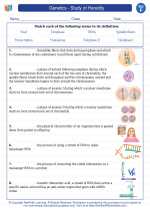Red Blood Cells
Red blood cells, also known as erythrocytes, are the most common type of blood cell in the human body. They are responsible for carrying oxygen from the lungs to the rest of the body and for transporting carbon dioxide from the body's tissues back to the lungs to be exhaled.
Structure of Red Blood Cells
Red blood cells are small, biconcave discs that give them a large surface area to volume ratio, allowing for efficient gas exchange. They do not have a nucleus, which gives them more space to carry oxygen and carbon dioxide. The red color of blood comes from the iron-containing molecule, hemoglobin, found in red blood cells.
Function of Red Blood Cells
The primary function of red blood cells is to transport oxygen from the lungs to the body's tissues and to carry carbon dioxide, a waste product, from the tissues back to the lungs for exhalation. Hemoglobin, the protein inside red blood cells, binds to oxygen in the lungs and releases it in the body's tissues, while also picking up carbon dioxide to be transported back to the lungs.
Formation of Red Blood Cells
Red blood cells are produced in the bone marrow through a process called erythropoiesis. The hormone erythropoietin, produced by the kidneys in response to low oxygen levels, stimulates the production of red blood cells. These cells have a lifespan of about 120 days, after which they are removed from the bloodstream by the spleen and liver, and new red blood cells are produced to replace them.
Study Guide
- What is the main function of red blood cells?
- Describe the structure of red blood cells and explain how it helps in their function.
- How are red blood cells produced in the body? Explain the role of erythropoietin in this process.
- What is the molecule responsible for the red color of blood, and what is its function in red blood cells?
- Explain the process of gas exchange facilitated by red blood cells in the body.
◂Science Worksheets and Study Guides Sixth Grade. Genetics - Study of Heredity

 Activity Lesson
Activity Lesson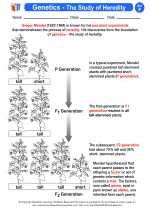
 Worksheet/Answer key
Worksheet/Answer key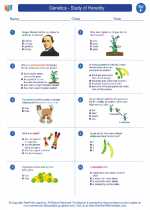
 Worksheet/Answer key
Worksheet/Answer key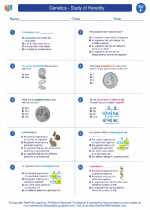
 Worksheet/Answer key
Worksheet/Answer key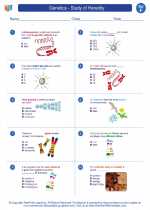
 Vocabulary/Answer key
Vocabulary/Answer key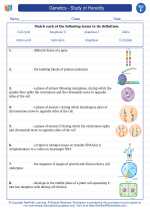
 Vocabulary/Answer key
Vocabulary/Answer key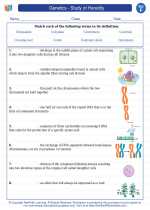
 Vocabulary/Answer key
Vocabulary/Answer key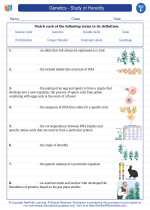
 Vocabulary/Answer key
Vocabulary/Answer key
 Vocabulary/Answer key
Vocabulary/Answer key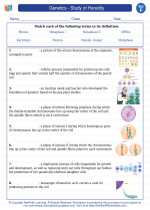
 Vocabulary/Answer key
Vocabulary/Answer key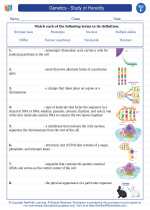
 Vocabulary/Answer key
Vocabulary/Answer key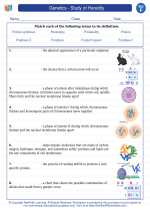
 Vocabulary/Answer key
Vocabulary/Answer key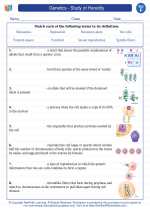
 Vocabulary/Answer key
Vocabulary/Answer key